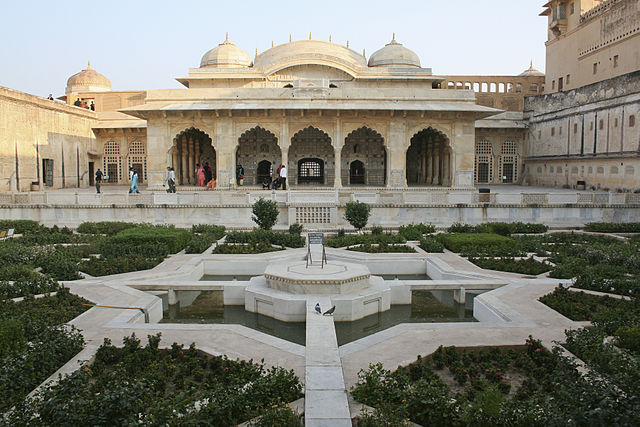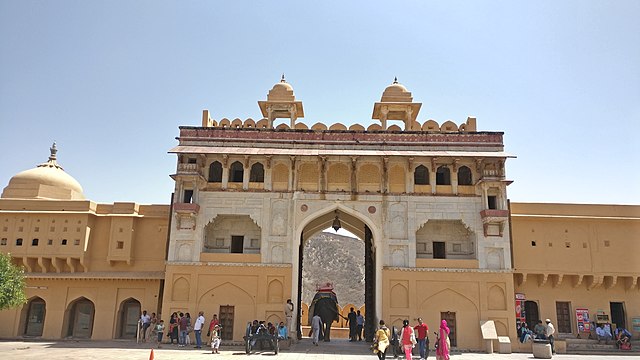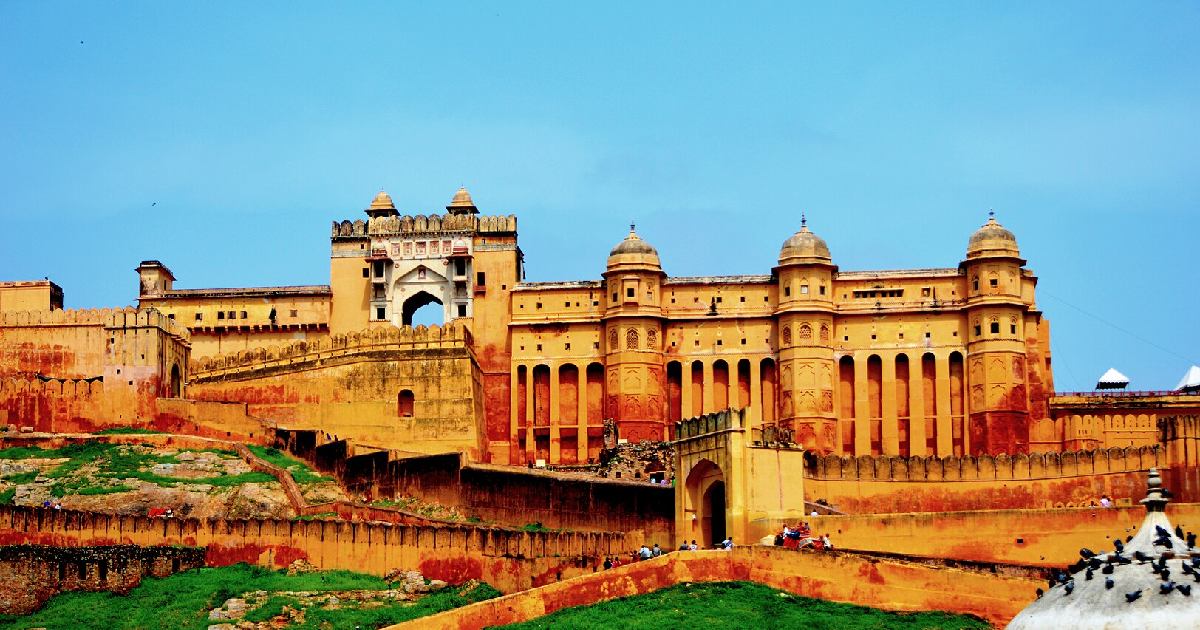Nestled majestically in the rugged hills near Jaipur, Amber Palace stands as a timeless beacon of India’s rich cultural heritage. This architectural marvel, also known as ‘Amer Fort,’ unveils the opulence and grandeur of Rajasthan’s royal past. With its intricate designs, strategic layout, and historical significance, Amber Palace beckons travelers from far and wide to immerse themselves in its captivating allure. Join us on a journey through this iconic monument, where each wall whispers tales of a glorious bygone era, offering a glimpse into the resplendent history of India.
Historical Significance of Amber Palace

Origin and Construction
Centuries ago, in the 16th century, Maharaja Man Singh I commissioned the construction of Amber Palace, originally known as ‘Amer Fort.’ Built with red sandstone and marble, its construction spanned over many generations, amalgamating Rajput and Mughal architectural styles.
Architectural Marvels
The palace’s architectural prowess lies in its intricate designs, breathtaking courtyards, and strategic layout. Each section, from the Diwan-i-Aam to the private chambers, portrays an exceptional blend of artistic finesse and strategic defense.
Exploring the Grandeur

Fortification and Layout
The palace complex, perched atop a hill, boasts a fortified structure that once protected the ruling dynasty. Its layout, comprising multiple gates, palaces, and gardens, served both defensive and aesthetic purposes.
Intricate Design Elements
Wandering through the palace, one encounters the Sheesh Mahal, adorned with thousands of mirror tiles that reflect light in a mesmerizing dance. The Ganesh Pol, an ornate gateway adorned with vibrant frescoes, stands as a testament to the artisans’ unparalleled skill.
Amber Palace: Cultural Heritage
Influence on Rajasthani Culture
Amber Palace isn’t just a structure; it’s an integral part of Rajasthan’s cultural heritage. Its architecture, festivals, and stories resonate within the hearts of locals, preserving traditions through generations.
Impact on Tourism
Tourists flock to this enchanting site, drawn by its historical significance and architectural brilliance. The palace serves as a magnet, attracting travelers eager to witness its grandeur firsthand.
Unveiling the Royal Splendor
Sheesh Mahal – Hall of Mirrors
Among its many wonders, the Sheesh Mahal stands out. Encrusted with intricate mirror work, this hall creates an illusion of a star-studded night, a spectacle that leaves visitors spellbound.
Ganesh Pol – Gateway to Opulence
The Ganesh Pol, adorned with detailed frescoes and intricate motifs, offers a glimpse into the opulent lifestyle of the royals. Its vibrant colors and elaborate designs narrate tales of grandeur.
Preservation Efforts and Challenges
Conservation Initiatives
Preserving this architectural jewel requires concerted efforts. Conservation teams work tirelessly to maintain its structural integrity and protect the delicate artwork from the ravages of time.
Environmental and Maintenance Challenges
However, the passage of time and environmental factors pose challenges. Efforts to balance tourism with preservation and mitigate wear and tear remain ongoing.
Visiting Amber Palace: Tips and Recommendations
Best Times to Visit
To experience the palace in its full glory and avoid the scorching heat, visit during the cooler months, from October to March.
Must-See Attractions
While exploring, prioritize visits to the Sheesh Mahal, Ganesh Pol, and the breathtaking panoramic views from the palace’s vantage points.
Conclusion
Amber Palace, a timeless marvel nestled in the heart of Jaipur, stands as a testament to the grandeur and architectural brilliance of the bygone era. Its intricate designs, opulent halls, and strategic layout offer visitors a glimpse into the majestic past of Rajasthan. As tourists wander through the corridors adorned with mirror work and vibrant frescoes, they become part of a rich history that continues to enchant and inspire. The efforts in preserving this heritage site echo the importance of safeguarding our cultural treasures for future generations to cherish and admire. Amber Palace remains not just a monument but a living legacy, inviting travelers to immerse themselves in its royal splendor and immerse in the allure of India’s regal history.
FAQs
How long does it take to explore Amber Palace thoroughly?
- Plan for at least 2-3 hours to explore the palace and its key attractions adequately.
Are there any guided tours available at Amber Palace?
- Yes, guided tours are available, offering insightful narratives about the palace’s history and architecture.
Can visitors take photographs inside the palace?
- Yes, photography is permitted, allowing visitors to capture the mesmerizing beauty of the palace.
Is there an entry fee to visit Amber Palace?
- Yes, there is an entry fee for both domestic and international visitors, with different rates for adults and children.
What are some nearby attractions to explore along with Amber Palace?
- Nearby attractions include Jaigarh Fort, Nahargarh Fort, and the scenic Maota Lake.
What is the best time of day to visit Amber Palace?
- Early mornings or late afternoons offer pleasant weather and softer lighting, enhancing the experience.
Are there any restrictions on clothing for visitors to Amber Palace?
- While there are no specific dress codes, modest attire is recommended out of respect for the cultural significance of the site.
Is there any accessibility accommodation for differently-abled visitors?
- Efforts have been made to ensure accessibility, but some areas might pose challenges due to the historical structure’s layout.
Are there audio guides or information boards available in multiple languages?
- Yes, visitors can access audio guides or information boards in various languages for a more immersive experience.
Can visitors buy souvenirs or local crafts within Amber Palace premises?
- Yes, there are shops within the palace complex offering a variety of souvenirs and local crafts for purchase.


